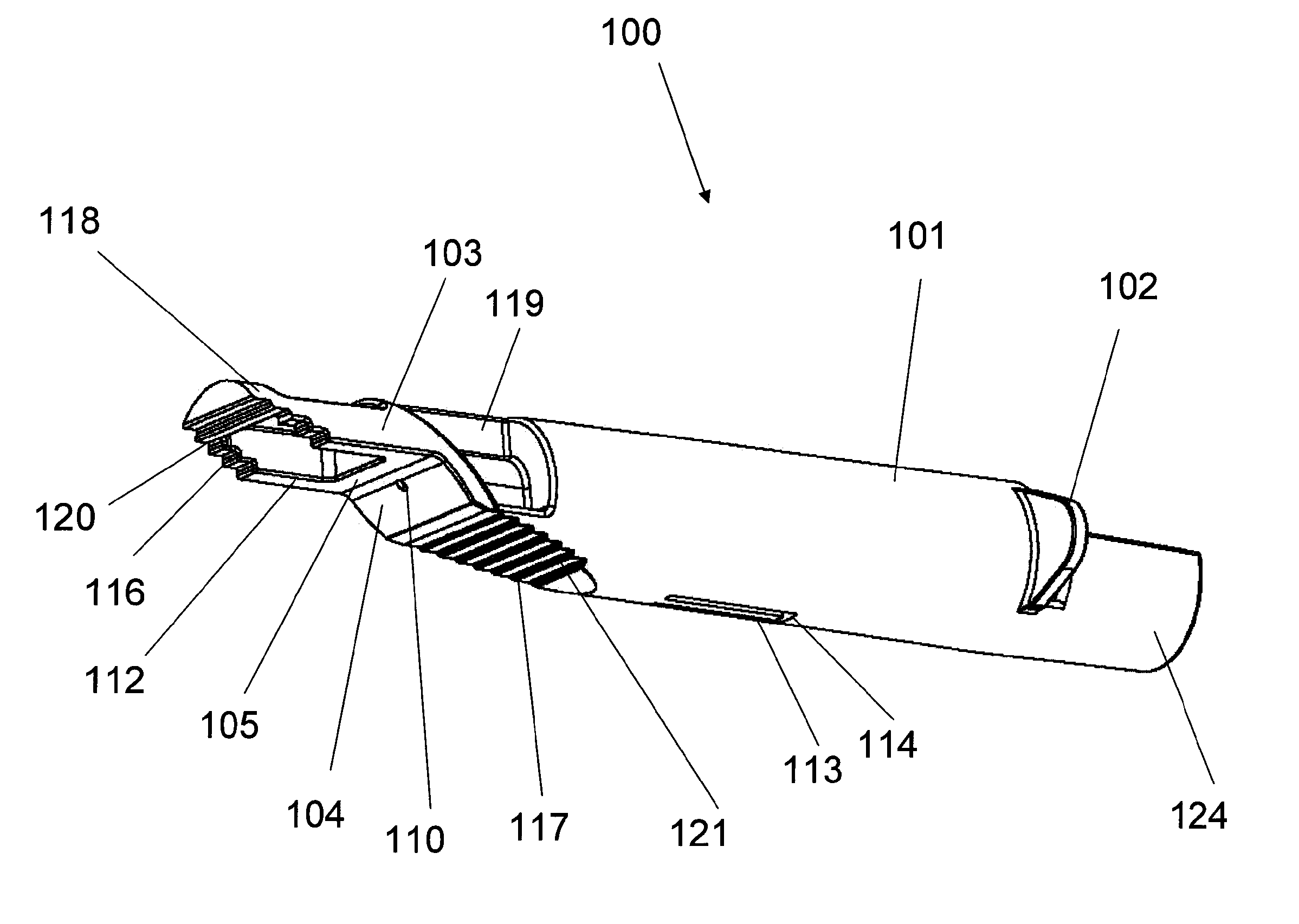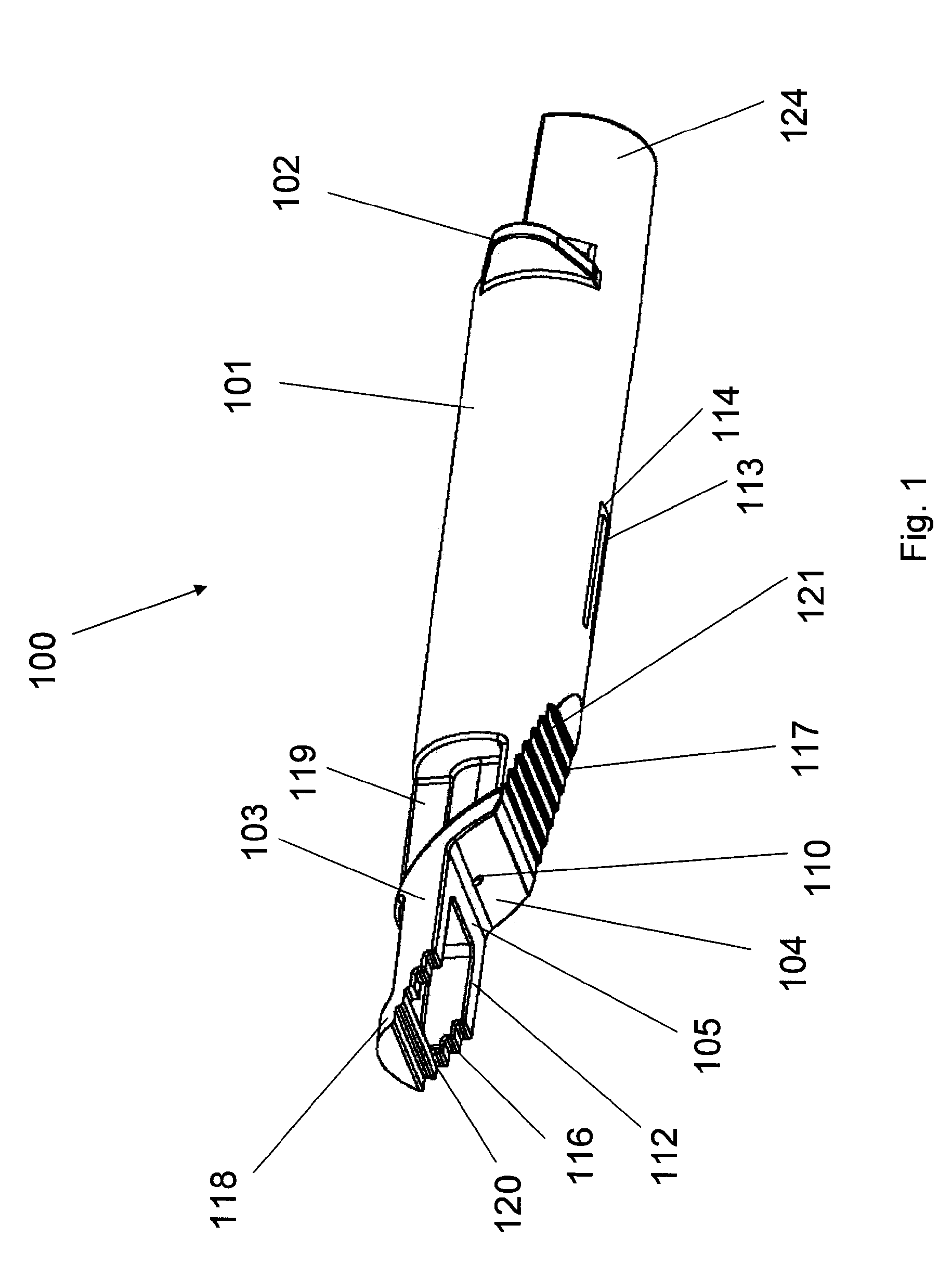Methods and devices for intradermal injection
a technology of intradermal injection and device, which is applied in the direction of intravenous devices, infusion needles, other medical devices, etc., can solve the problems of intradermal injection failure, difficult intradermal injection, and loss of delivered compound on the surface of the skin, so as to facilitate intradermal injection and minimize user skill , the effect of minimal training
- Summary
- Abstract
- Description
- Claims
- Application Information
AI Technical Summary
Benefits of technology
Problems solved by technology
Method used
Image
Examples
example 1
[0121]An ID adapter evaluation was conducted with a machined adapter prototype and a single use syringe. The adapter prototype was sized to accommodate in a sliding relationship BD PLASTIPAK syringe with 1 ml volume, 0.5″ long needle and cannula gage 28. The cannula lancet had a conventional subcutaneous bevel. The injection procedure was as follows: 0.1 or 0.5 ml WFI was aspirated into the syringe; the syringe was placed in the adapter with the needle tip positioned in the cannula passageway; the adapter was applied to the desired injection site; the needle was inserted into dermis; the contents were injected; and the needle was withdrawn and the syringe discarded. The needle placement depth was adjusted to locate the cannula center line at about 0.5 mm from the dermis surface. The needle cannula length in the dermis was set at 4.5 mm. WFI volumes of 50 μl and 100 μl were tested.
[0122]The initial evaluation in volunteers with the injection of 0.1 ml of WFI produced blebs customaril...
PUM
 Login to View More
Login to View More Abstract
Description
Claims
Application Information
 Login to View More
Login to View More - R&D
- Intellectual Property
- Life Sciences
- Materials
- Tech Scout
- Unparalleled Data Quality
- Higher Quality Content
- 60% Fewer Hallucinations
Browse by: Latest US Patents, China's latest patents, Technical Efficacy Thesaurus, Application Domain, Technology Topic, Popular Technical Reports.
© 2025 PatSnap. All rights reserved.Legal|Privacy policy|Modern Slavery Act Transparency Statement|Sitemap|About US| Contact US: help@patsnap.com



